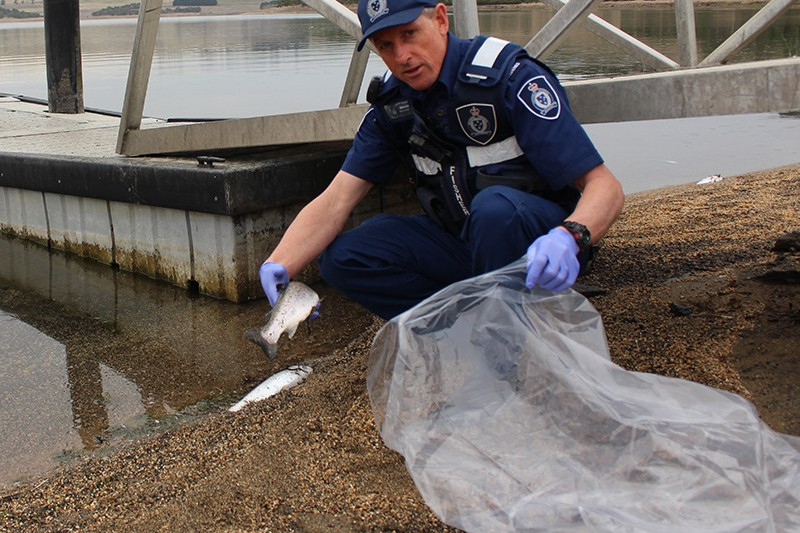General News
4 April, 2019
Algae likely cause of fish kill
Lake Bullen Merri experienced a “minor” fish kill this week with about 150 fish found dead around the perimeter of the lake.

LAKE Bullen Merri experienced a “minor” fish kill this week with about 150 fish found dead around the perimeter of the lake.
The fish kill was first noticed Monday afternoon with visitors to both South Beach and North Beach raising the alarm.
The predominant species affected were salmon, although a number of brown and rainbow trout were also impacted.
Slow moving fish were also observed in the lake’s shallow edges with a couple making concerted efforts to beach themselves on the shore.
Victorian Fisheries Authority chief executive officer Travis Dowling described the fish kill as “minor” in comparison to previous occurrences.
“We’re confident the lake will get through this event and return to normal soon,” he said.
“At this stage we think the cause of the fish kill was blue-green algae.
“As the cold weather comes in, it kills the algae and the process of the algae breaking down diminishes the oxygen in the water.”
Mr Dowling said salmon were a shorter living species than trout and were likely to have a lower threshold to oxygen differences.
Fisheries officers gathered up the dead fish, while independent researchers Austral Research attended and took dead fish samples, water samples and algal samples for testing.
“The testing will be done to make sure there is nothing more in it than being algae related,” Mr Dowling said.
“The last time we recorded a fish kill at Lake Bullen Merri was during the 2010 millenial drought.
“We are heading into the prime trout and salmon fishing season of June, July and August and want to encourage people to visit both Lake Bullen Merri and Lake Purrumbete to try their luck.
“They are two of Victoria’s premier trout fisheries and that has not changed.”
Native Fish Australia Victoria representative Stephen Mueller said a number of bass had also succumbed to the fish kill.
He said the lake’s water quality would continue to decline as the water level dropped.
“The more the lake declines the higher the nutrient content becomes per litre of water,” he said.
“The nutrients result in algal blooms which then take the oxygen out of the water.
“I fully expect fish kills to become more prevalent as we go forward.”
Mr Mueller said Lake Bullen Merri’s thermocline level was measured at about 15 metres deep.
“The oxygenated water is the top half of the thermocline, while the bottom half has very little oxygen,” he said.
“Ninety per cent of the fish stay above the thermocline, but if that 15 metres of water is affected by algal blooms, the algae takes the oxygen out of the water.”
Mr Mueller said nitrogen entered the lake water via manure from stock grazing within the crater bowl, the application of fertilisers in the bowl which then run-off into the lake and the continual exposure of sediment as the lake receded.
“As the lake recedes, the wave action along the edges stirs up the newly exposed sediment and releases nutrients that have been historically trapped in it,” he said.
“In terms of repairing, or at least improving the lake water’s health, I can’t see any alternative than bringing an end to grazing cattle and fertilising in the crater bowl.
“We need to get some sort of control back.”
Mr Mueller also advocated for the planting of trees and native grasses on the crater slopes to use up existing nutrients and to stem their flow into the lake itself.